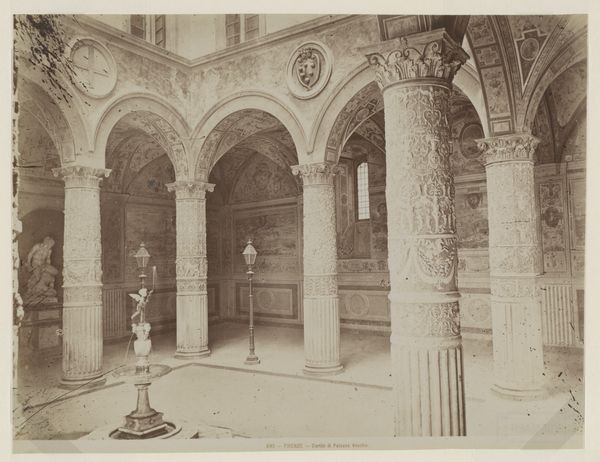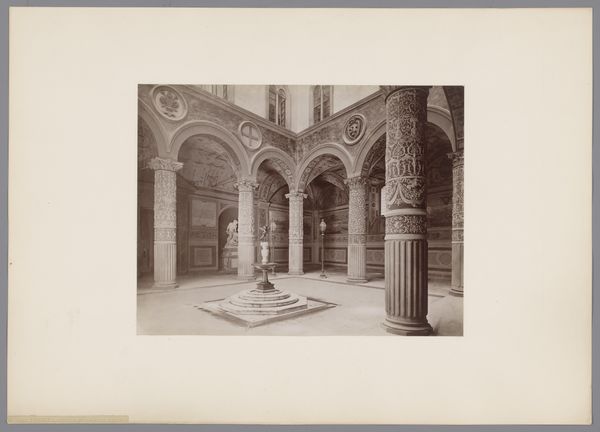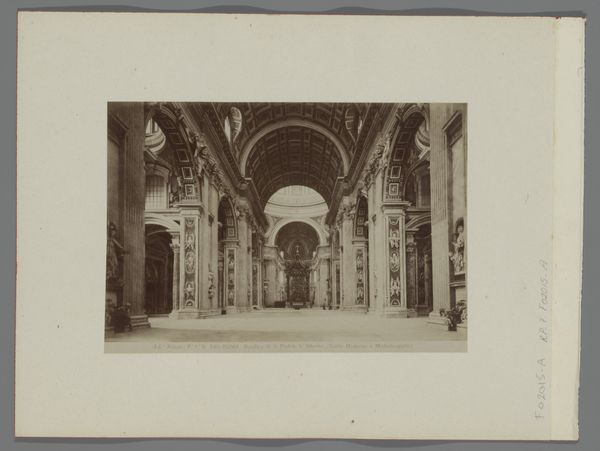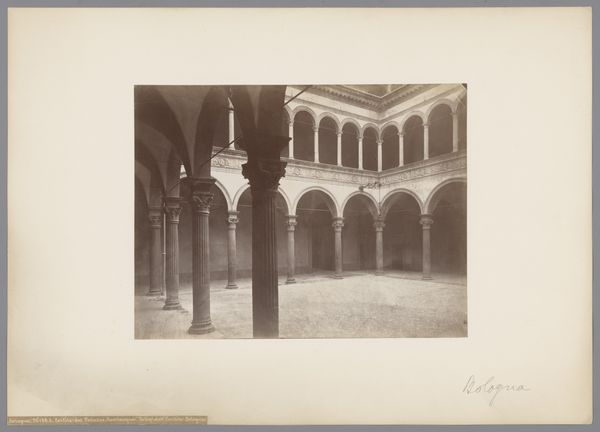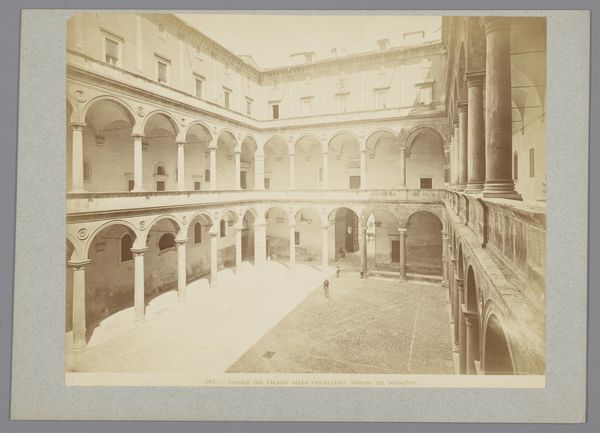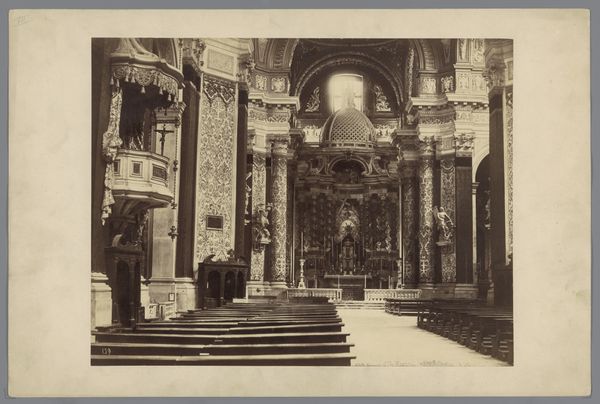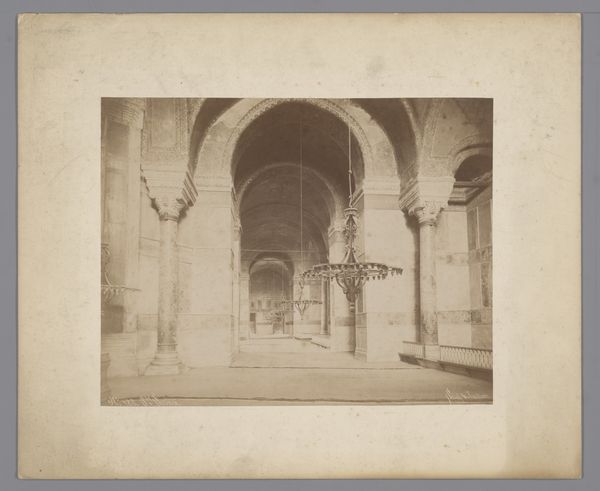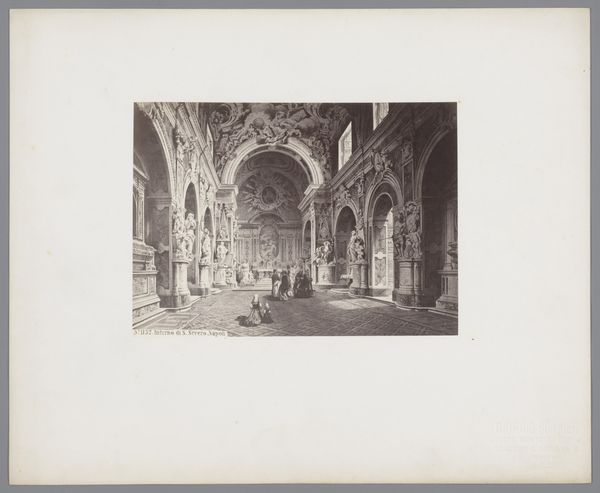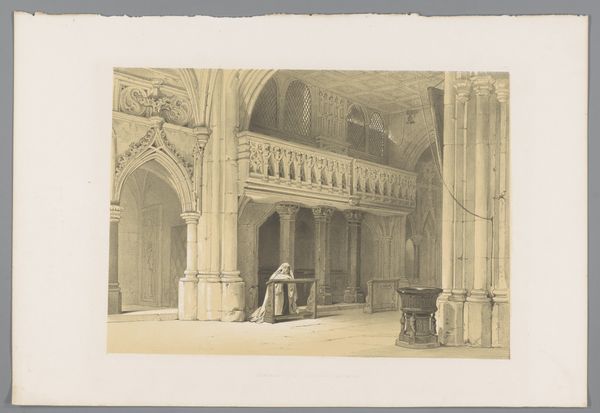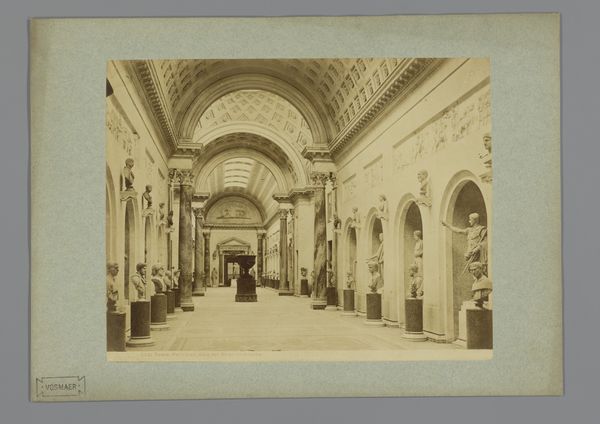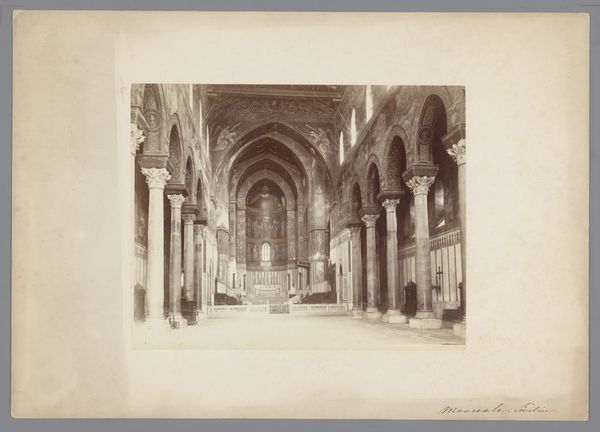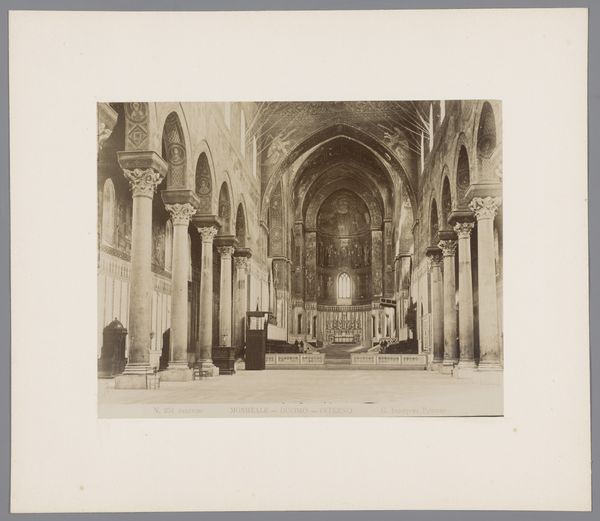
print, photography, architecture
# print
#
photography
#
19th century
#
cityscape
#
paper medium
#
italian-renaissance
#
architecture
Dimensions: height 432 mm, width 580 mm, height 480 mm, width 640 mm
Copyright: Rijks Museum: Open Domain
Curator: Here we have "Binnenplaats van het Palazzo Vecchio te Florence", a photograph, most likely a print on paper, taken by Fratelli Alinari sometime between 1880 and 1900. It's currently held at the Rijksmuseum. Editor: It's a beautiful shot, quite evocative. The symmetry of the courtyard and the play of light and shadow really give it a sense of depth. How do you approach a piece like this from a formalist perspective? Curator: My focus gravitates to the composition and its inherent visual language. Consider the verticality asserted by the columns, juxtaposed with the horizontal planes of the architecture. The rhythm created by the repeated arches compels the eye to travel across the space. What semiotic relationships do you discern between the architectural elements and the use of light? Editor: I hadn't thought of it in terms of semiotics, but now that you mention it, the light almost acts as a signifier of clarity and order, bouncing off of those repeated arches to draw the viewer further into the space. And the columns, in their ornateness, feel symbolic of power and history. Curator: Precisely. The textures, meticulously rendered, present a study in contrasts—the smooth surfaces versus the intricately carved details. Notice how the tonal range affects your perception of space. Does the artist manipulate this range to emphasize certain elements over others? Editor: Absolutely. The foreground is quite muted, which almost forces your eye towards the brighter, more detailed sections deeper in the courtyard. So, the artist is really using tonality to guide the viewer’s eye. Is it fair to consider their artistic intentions without looking to historical context? Curator: While intentionality remains elusive, close examination of the work’s visual devices will reveal a constructed reality where meaning emerges from the inherent pictorial structure, devoid of outside influences. Consider the medium: what meanings are built or lost when translating architecture into photography? Editor: I see what you mean. By focusing solely on what's presented, you can decode so much about the artist's choices and the power of the visual language itself. This formalist lens gives us a fresh way of interpreting the image! Curator: Indeed. Shifting our perspective from subject to structural integrity exposes hidden, intentional design elements that would otherwise remain obscured.
Comments
No comments
Be the first to comment and join the conversation on the ultimate creative platform.
